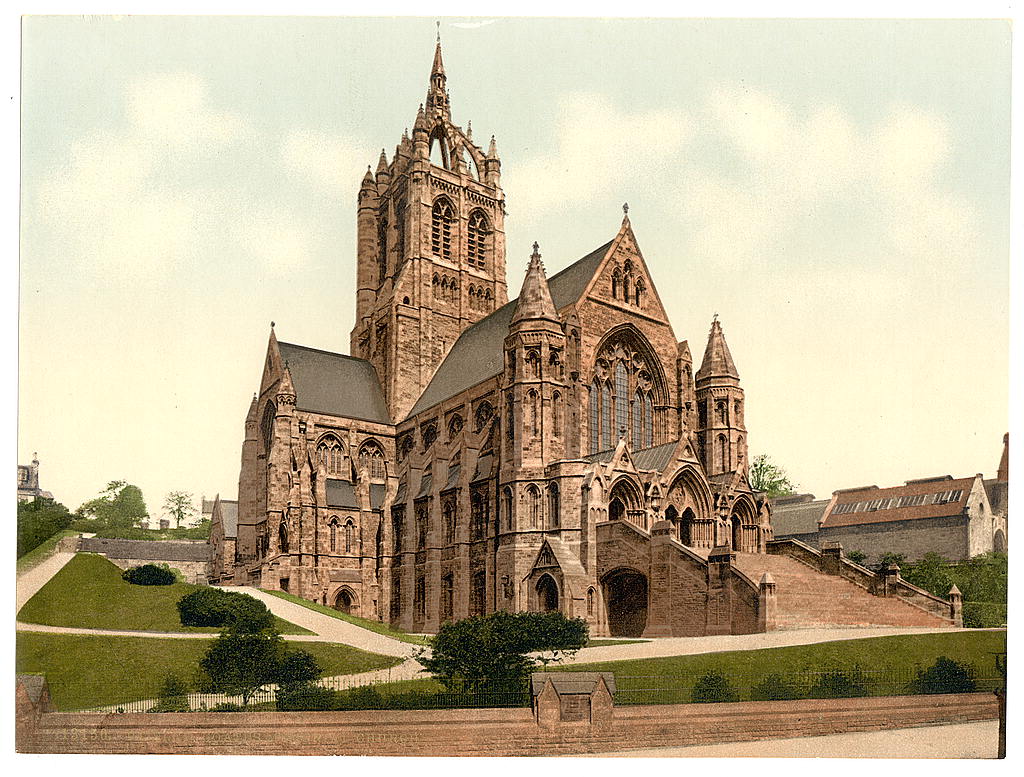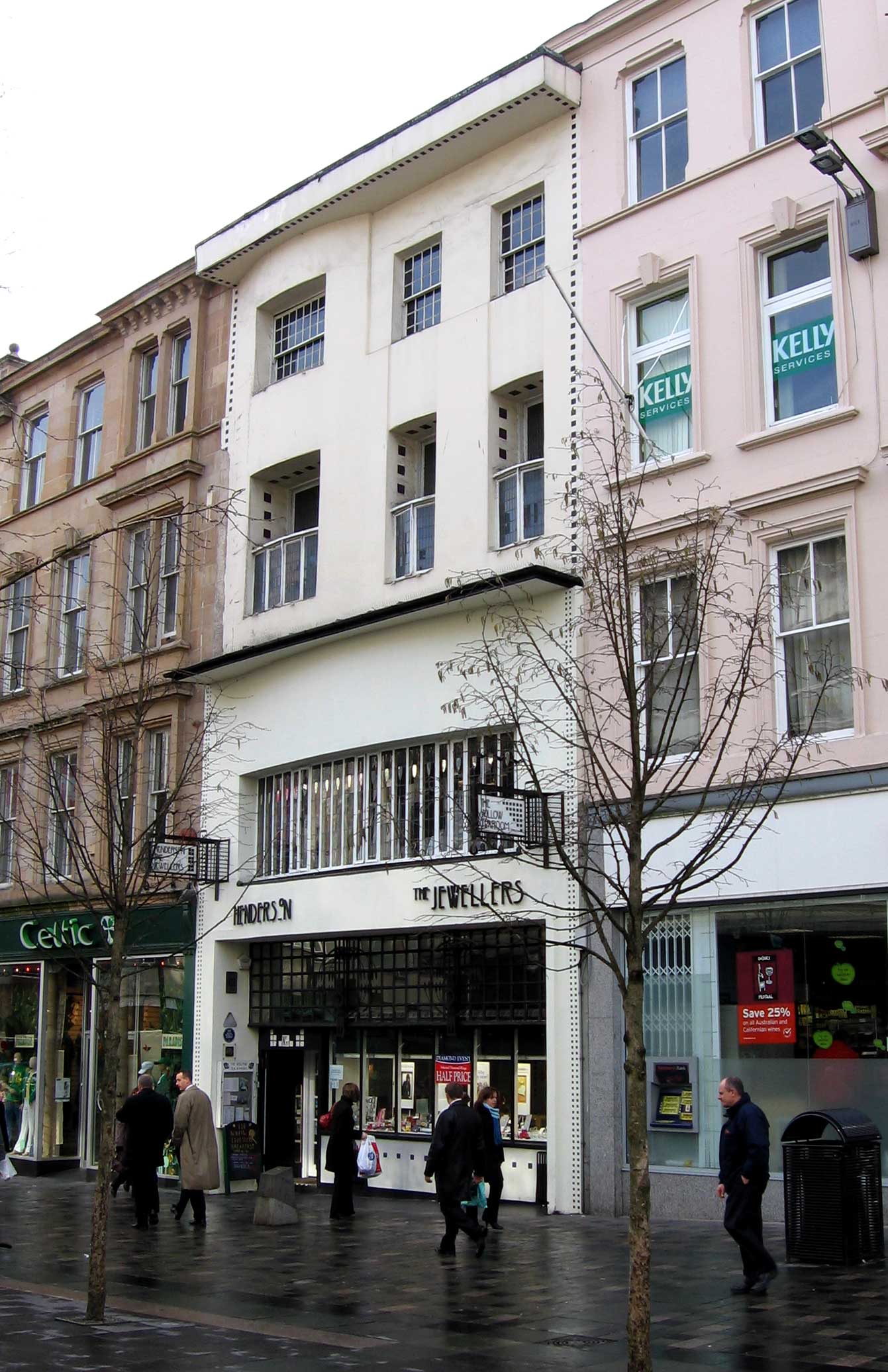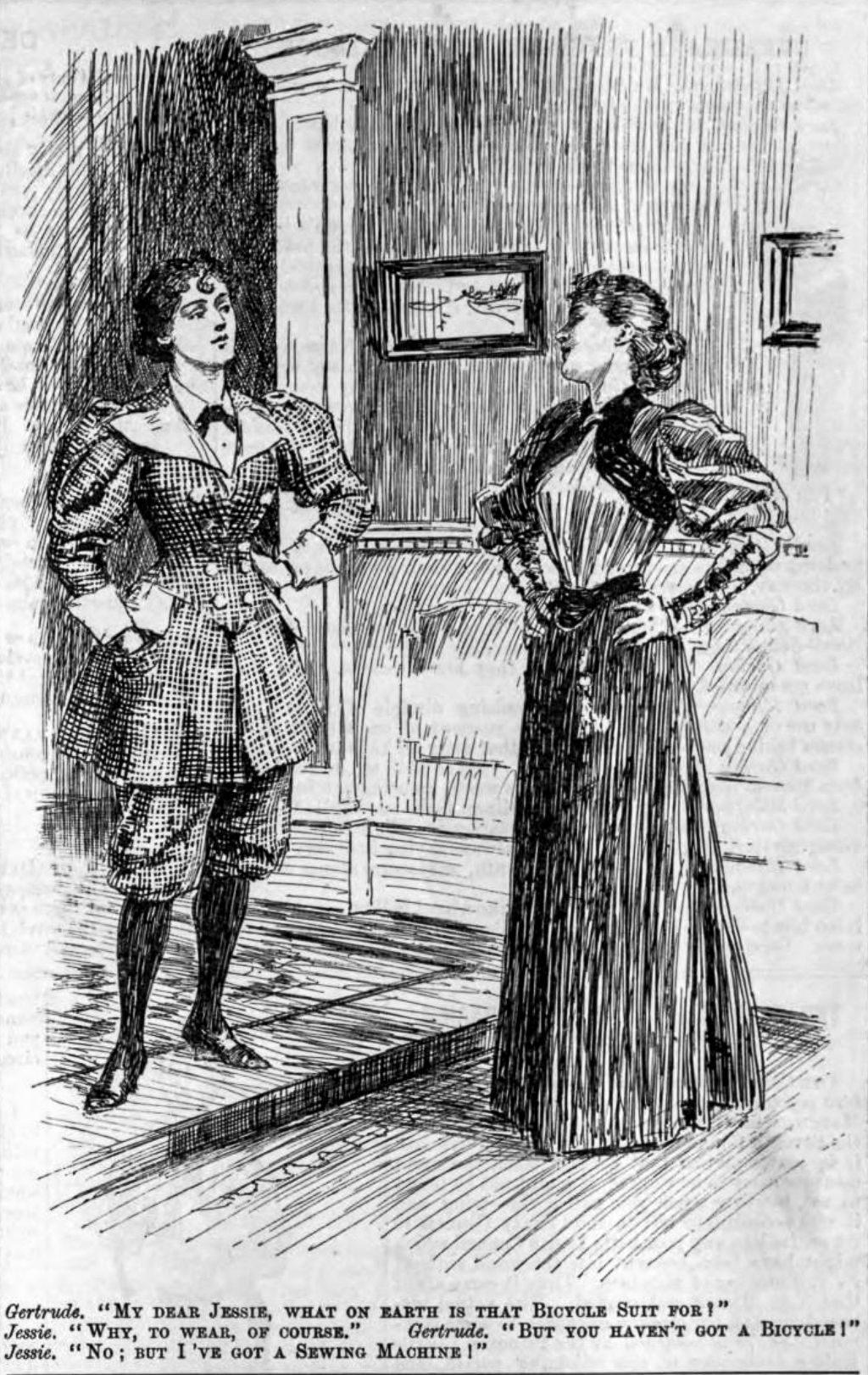|
Jessie Newbery
Jessie Newbery (28 May 1864 – 27 April 1948) was a Scottish artist and embroiderer. She was one of the artists known as the Glasgow Girls. Newbery also created the Department of Embroidery at the Glasgow School of Art where she was able to establish needlework as a form of unique artistic design. She married the director of the Glasgow School of Art, Francis Newbery, in 1889. Early life and education Born Jessie Wylie Rowat in Paisley, she was the daughter of Margaret Downie Hill and William Rowat, a forward-thinking shawl manufacturer. A visit to Italy when Newbery was aged 18 stimulated a lifelong interest in textiles and other decorative arts. She enrolled as a student at the Glasgow School of Art in 1884. Work and career Newbery became an accomplished and original embroideress, though embroidery was not formally taught at the Glasgow School of Art. The profile of embroidery was raised at the school through the work of the "Four" – Charles Rennie Mackintosh, ... [...More Info...] [...Related Items...] OR: [Wikipedia] [Google] [Baidu] |
Paisley, Renfrewshire
Paisley ( ; sco, Paisley, gd, Pàislig ) is a large town situated in the west central Lowlands of Scotland. Located north of the Gleniffer Braes, the town borders the city of Glasgow to the east, and straddles the banks of the White Cart Water, a tributary of the River Clyde. Paisley serves as the administrative centre for the Renfrewshire council area, and is the largest town in the historic county of the same name. It is often cited as "Scotland's largest town" and is the fifth largest settlement in the country, although it does not have city status. The town became prominent in the 12th century, with the establishment of Paisley Abbey, an important religious hub which formerly had control over other local churches. By the 19th century, Paisley was a centre of the weaving industry, giving its name to the Paisley shawl and the Paisley pattern. The town's associations with political radicalism were highlighted by its involvement in the Radical War of 1820, wit ... [...More Info...] [...Related Items...] OR: [Wikipedia] [Google] [Baidu] |
Charles Rennie Mackintosh
Charles Rennie Mackintosh (7 June 1868 – 10 December 1928) was a Scottish architect, designer, water colourist and artist. His artistic approach had much in common with European Symbolism. His work, alongside that of his wife Margaret Macdonald, was influential on European design movements such as Art Nouveau and Secessionism and praised by great modernists such as Josef Hoffmann. Mackintosh was born in Glasgow and died in London. He is among the most important figures of Modern Style (British Art Nouveau style). Early life and education Charles Rennie Mackintosh was born at 70 Parson Street, Townhead, Glasgow, on 7 June 1868, the fourth of eleven children and second son of William McIntosh, a superintendent and chief clerk of the City of Glasgow Police. He attended Reid's Public School and the Allan Glen's Institution from 1880 to 1883. William's wife Margaret Mackintosh née 'Rennie' grew up in the Townhead and Dennistoun (Firpark Terrace) areas of Glasgow. Name He ... [...More Info...] [...Related Items...] OR: [Wikipedia] [Google] [Baidu] |
Women's Social And Political Union
The Women's Social and Political Union (WSPU) was a women-only political movement and leading militant organisation campaigning for women's suffrage in the United Kingdom from 1903 to 1918. Known from 1906 as the suffragettes, its membership and policies were tightly controlled by Emmeline Pankhurst and her daughters Christabel and Sylvia; Sylvia was eventually expelled. The WSPU membership became known for civil disobedience and direct action. Emmeline Pankhurst described them as engaging in a " reign of terror". Group members heckled politicians, held demonstrations and marches, broke the law to force arrests, broke windows in prominent buildings, set fire to or introduced chemicals into postboxes thus injuring several postal workers, and committed a series of arsons that killed at least five people and injured at least 24. When imprisoned, the group's members engaged in hunger strikes and were subject to force-feeding. Emmeline Pankhurst said the group's goal was "to ma ... [...More Info...] [...Related Items...] OR: [Wikipedia] [Google] [Baidu] |
Glasgow Society Of Lady Artists
The Glasgow Society of Lady Artists was founded in 1882 by eight female students of the Glasgow School of Art with the aim of affording due recognition to women in the field of art. It has been described by Jude Burkhauser as "the first residential club in Scotland run by and for women". In the early days of the club, they met at 136 Wellington Street, Glasgow. The names of the founding members are somewhat under discussion, but they are thought to include: first president Georgina Mossman Greenlees, Mrs Joseph Agnew, Elizabeth Patrick, Margaret M Campbell, Henrietta Robertson, treasurer Frieda Rohl, Jane Nisbet, Helen Salmon, Jane Cowan Wyper, Margaret Macdonald (not Margaret Macdonald Mackintosh), Isabella Ure and Mrs Provan. They were all students of staff at Glasgow School of Art, and were successful artists, teachers and art workers. Their first meeting, in 1882, was held in the studio of Robert Greenlees, Georgina Greenlees' father, who helped the group write a book of ru ... [...More Info...] [...Related Items...] OR: [Wikipedia] [Google] [Baidu] |
Renaissance
The Renaissance ( , ) , from , with the same meanings. is a period in European history The history of Europe is traditionally divided into four time periods: prehistoric Europe (prior to about 800 BC), classical antiquity (800 BC to AD 500), the Middle Ages (AD 500 to AD 1500), and the modern era (since AD 1500). The first early ... marking the transition from the Middle Ages to modernity and covering the 15th and 16th centuries, characterized by an effort to revive and surpass ideas and achievements of classical antiquity. It occurred after the Crisis of the Late Middle Ages and was associated with great social change. In addition to the standard periodization, proponents of a "long Renaissance" may put its beginning in the 14th century and its end in the 17th century. The traditional view focuses more on the Early modern period, early modern aspects of the Renaissance and argues that it was a break from the past, but many historians today focus more on its medieval a ... [...More Info...] [...Related Items...] OR: [Wikipedia] [Google] [Baidu] |
Rational Dress
Victorian dress reform was an objective of the Victorian dress reform movement (also known as the rational dress movement) of the middle and late Victorian era, led by various reformers who proposed, designed, and wore clothing considered more practical and comfortable than the fashions of the time. Dress reformists were largely middle-class women involved in the first wave of feminism in the Western World, from the 1850s through the 1890s. The movement emerged in the Progressive Era along with calls for temperance, women's education, suffrage and moral purity. Dress reform called for emancipation from the "dictates of fashion", expressed a desire to "cover the limbs as well as the torso adequately," and promoted "rational dress". The movement had its greatest success in the reform of women's undergarments, which could be modified without exposing the wearer to social ridicule. Dress reformers were also influential in persuading women to adopt simplified garments for athletic ... [...More Info...] [...Related Items...] OR: [Wikipedia] [Google] [Baidu] |
Glasgow Girls (artists)
The Glasgow School was a circle of influential artists and designers that began to coalesce in Glasgow, Scotland in the 1870s, and flourished from the 1890s to around 1910. Representative groups included The Four (also known as the Spook School), the Glasgow Girls and the Glasgow Boys. Part of the international Art Nouveau movement, they were responsible for creating the distinctive Glasgow Style (see Modern Style (British Art Nouveau style)). Glasgow experienced an economic boom at the end of the 19th century, resulting in an increase in distinctive contributions to the Art Nouveau movement, particularly in the fields of architecture, interior design and painting. The Four (Spook School) Among the most prominent definers of the Glasgow School collective were The Four. They were the painter and glass artist Margaret MacDonald, acclaimed architect Charles Rennie Mackintosh (MacDonald's husband), MacDonald's sister Frances and Herbert MacNair. Together, The Four defined the G ... [...More Info...] [...Related Items...] OR: [Wikipedia] [Google] [Baidu] |
Glasgow Boys
The Glasgow School was a circle of influential artists and designers that began to coalesce in Glasgow, Scotland in the 1870s, and flourished from the 1890s to around 1910. Representative groups included The Four (also known as the Spook School), the Glasgow Girls and the Glasgow Boys. Part of the international Art Nouveau movement, they were responsible for creating the distinctive Glasgow Style (see Modern Style (British Art Nouveau style)). Glasgow experienced an economic boom at the end of the 19th century, resulting in an increase in distinctive contributions to the Art Nouveau movement, particularly in the fields of architecture, interior design and painting. The Four (Spook School) Among the most prominent definers of the Glasgow School collective were The Four. They were the painter and glass artist Margaret MacDonald, acclaimed architect Charles Rennie Mackintosh (MacDonald's husband), MacDonald's sister Frances and Herbert MacNair. Together, The Four defined the G ... [...More Info...] [...Related Items...] OR: [Wikipedia] [Google] [Baidu] |
The Studio (magazine)
''The Studio: An Illustrated Magazine of Fine and Applied Art'' was an illustrated fine arts and decorative arts magazine published in London from 1893 until 1964. The founder and first editor was Charles Holme. The magazine exerted a major influence on the development of the Art Nouveau and Arts and Crafts movements. It was absorbed into ''Studio International'' magazine in 1964. History ''The Studio'' was founded by Charles Holme in 1893. Holme was in the wool and silk trades, had travelled extensively in Europe and had visited Japan and the United States with Lasenby Liberty and his wife Emma. During his travels he had formed: He retired from trade in order to start ''The Studio''. He had hoped to engage Lewis Hind as the editor of the new venture, but Hind went instead to William Waldorf Astor's ''Pall Mall Budget''. He suggested Joseph Gleeson White as an alternative. Gleeson White edited ''The Studio'' from the first issue in April 1893. In 1895 Holme took ove ... [...More Info...] [...Related Items...] OR: [Wikipedia] [Google] [Baidu] |
Socialism
Socialism is a left-wing Economic ideology, economic philosophy and Political movement, movement encompassing a range of economic systems characterized by the dominance of social ownership of the means of production as opposed to Private property, private ownership. As a term, it describes the Economic ideology, economic, Political philosophy, political and Social theory, social theories and Political movement, movements associated with the implementation of such systems. Social ownership can be State ownership, state/public, Community ownership, community, Collective ownership, collective, cooperative, or Employee stock ownership#Employee ownership, employee. While no single definition encapsulates the many types of socialism, social ownership is the one common element. Different types of socialism vary based on the role of markets and planning in resource allocation, on the structure of management in organizations, and from below or from above approaches, with some socialists ... [...More Info...] [...Related Items...] OR: [Wikipedia] [Google] [Baidu] |
Needle Weaving
Needle may refer to: Crafting * Crochet needle, a tool for making loops in thread or yarn * Knitting needle, a tool for knitting, not as sharp as a sewing needle * Sewing needle, a long slender tool with a pointed tip * Trussing needle, a long slender tool, sometimes with a flattened point, to tie poultry for cooking * Upholstery needle, a tool for upholstery, generally thick and curved Science and technology Botany * Needle (botany), of conifers Medicine * Hypodermic needle, a hollow needle commonly used with a syringe to inject fluid into or extract fluid from the body * Surgical needle, several types of needles used for surgical suture * Tuohy needle, a needle used to administer epidural catheters Technology * Acupuncture needle, in alternative medicine * Gramophone needle, used for playing records * Indicator needle, of a measuring instrument * Needle valve Places * Needle Rocks, Tasmania, Australia * Needle (stack), a sea stack on the island of Hoy, Orkney, Scotland ... [...More Info...] [...Related Items...] OR: [Wikipedia] [Google] [Baidu] |
Royal School Of Art Needlework
The Royal School of Needlework (RSN) is a hand embroidery school in the United Kingdom, founded in 1872 and based at Hampton Court Palace since 1987. History The RSN began as the School of Art Needlework in 1872, founded by Lady Victoria Welby. The first President was Princess Christian of Schleswig-Holstein, Queen Victoria's third daughter, known to the RSN as Princess Helena. She received help from William Morris and many of his friends in the Arts and Crafts movement. The School received its royal prefix in March 1875 when Queen Victoria consented to become its first patron. It was also an inspiration to Dora Wemyss, who founded the Wemyss School of Needlework in Scotland in its image. The word "Art" was dropped from the school's title in 1922. Its initial premises was a small apartment on Sloane Street, employing 20 women. The school had grown to 150 students, moving in 1903 to Exhibition Road, near the Victoria and Albert Museum. The purpose-built building was designed b ... [...More Info...] [...Related Items...] OR: [Wikipedia] [Google] [Baidu] |
.jpg)







.jpg)